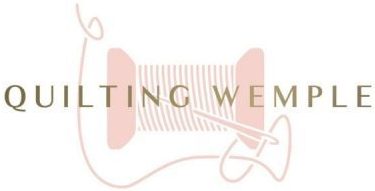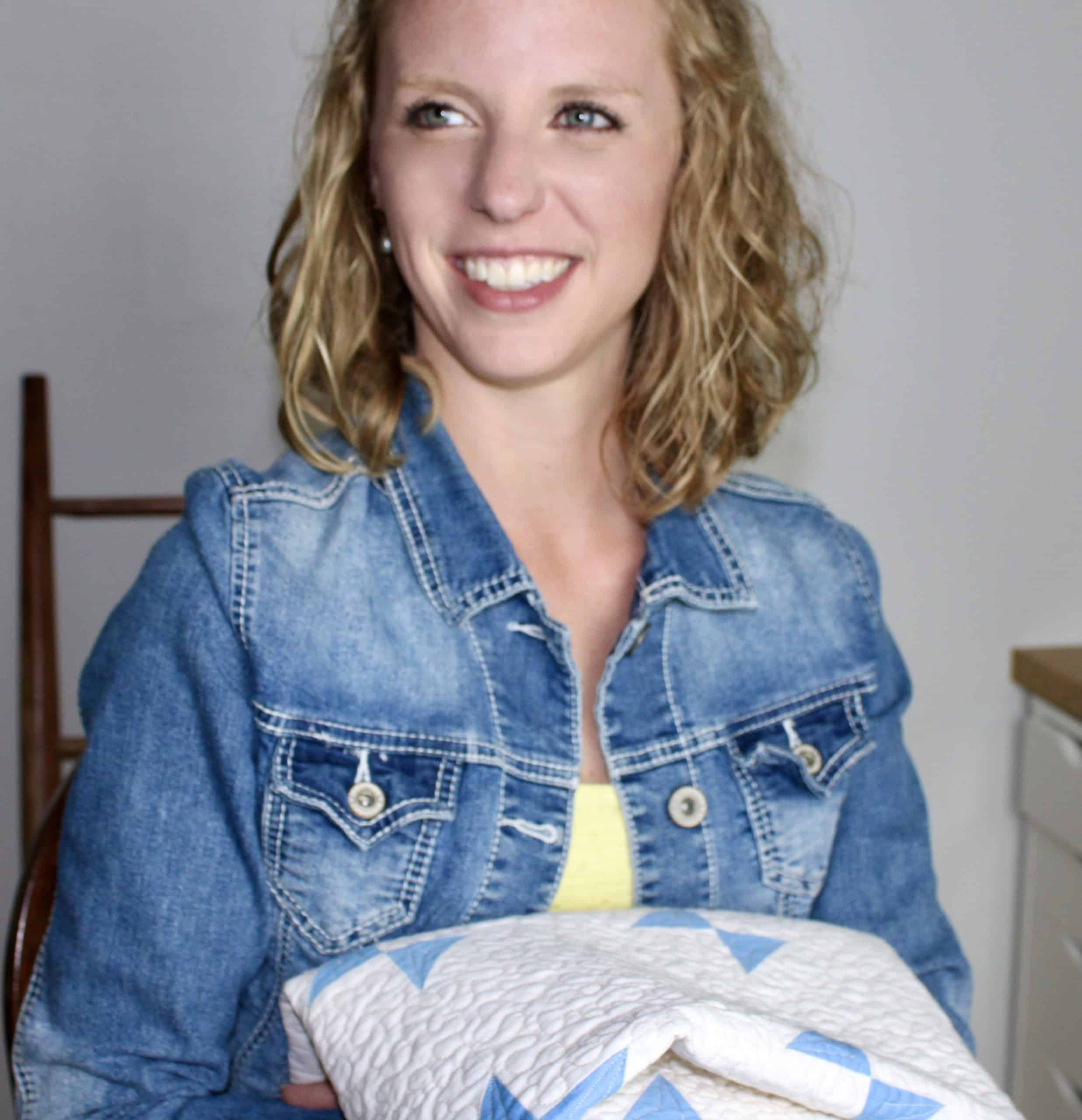Using ribbon candy variations in your quilts is a fun unexpected design that is always a fan favorite!
I always think of the actual candy in bright colors and sporting that bubble-y wave as the hard candy gets folded over itself.
For those like me who think of this candy as nostalgic and reminiscent of childhood, it’s no wonder the quilting design inspires so much fun!
The ribbon candy quilting design is definitely in my top 5 favorites so it makes sense to keep a few variations at the top of my head to make the most of this design.
Today I’ve collected a few of my favorite ways to use this design so by learning the motion once, you can get a ton of quilting designs out of it.

How to Quilt Ribbon Candy
First thing’s, first. If you’ve never heard of ribbon candy before, lets go over how to quilt one.
The ribbon candy is nothing more than a line that doubles back on itself over and over again in a sweeping motion.
The key is to create an “S” shape as you wave back and forth to get that bubbled look on each side.
When you reach out with the furthest part of the “S”, be sure to just barely touch the stitching line of the previous loop to get that traditional uninterrupted ribbon candy look.
Once you’ve gotten the hang of the original design, the fun can start with playing around with size, variation, and adding in details!
Common Places to Use the Ribbon Candy Design
The ribbon candy design is whats known as a directional design, meaning it can only move in one direction as opposed to a meander.
A meander is a bit different where it can move in every direction to fill in space and still have the same design.
For a ribbon candy to have the recognizable design, it must only move in one direction working its way from one end of the quilting area to the other in a row.
While you can certainly use this design in almost any block shape, this directional aspect of the design can make it very useful when it comes to long narrow areas such as borders, sashing, or strips in your quilt top.
7 Ribbon Candy Variation Ideas for Your Next Quilt
Now that we’ve talked a bit about how to quilt the design and places to use it, let’s talk about some different variations of this design that will allow you to take this one concept and get the most versatility out of it.
Tried and True Original

Counting the original doesn’t seem fair since this is supposed to be about variations, but you can’t go anywhere new if you don’t know where you’ve been!
Simple and clean the original ribbon candy is a design that is very easy to “get in the groove of” waving back and forth across the section of quilt you are working on.
Ribbon candy in general is not always a go to design so anytime you choose to include it, you’ll likely find yourself enjoying the break from straight lines or meanders.
Ribbon candy Bubbles

For a quick and easy update to this traditional design, when you get to the loop of the ribbon, add in a little circle right at the top, and then go right back into your ribbon.
The added detail will make the monotony of a typical border design more fun and will create unexpected detail not often found in the ribbon candy design.
It’ll take a little bit to get used to adding in the extra detail at the top since you’re interrupting the “flow” of the ribbon candy motion to include it, but once you’ve gotten the hang of it, you’ll find yourself including it everywhere!
Add it to every ribbon candy loop or just the occasional one every now and then for a whimsical look.
The Deluxe

Often referred to as the “Deluxe” this ribbon candy variation has a very luxurious feel to it.
For this design you’ll need two rows of ribbon candy, varying the size of the ribbon. One large loop that leaves a gap in the middle, and then a much smaller one that loops back on itself into the next large one.
By quilting two of these rows opposite each other, you can fit the smaller loops in the gaps of the bigger loops leaving you with this deluxe ribbon candy design.
The Pantograph

For a whimsical, bubbly, all over texture, you can vary the size of your ribbon candy row to take this traditional design and easily turn it into a pantograph.
Start by marking a gentle waving line across your quilt double checking that it sits square along a seam of your quilt top.
Make a second line that waves in the opposite direction. Where your first line curves up, make the second line curve down. This will give you a guideline where there are alternating wide parts and narrow parts.
Once thats figured out, just fill the space with your ribbon candy design! Making bigger loops in the wider areas and smaller loops in the narrower areas.
You can offset your rows to fill in the spaces between the waves to turn this traditional border design into a modern pantograph.
With some flair

Although not quite a traditional ribbon candy variation, this design definitely gives the feel of a ribbon candy while giving you a bit of variety if you’ve been going ribbon candy crazy lately.
In more of a wishbone style, for this one you’ll actually quilt two separate “half” rows that cross over each other, giving you the final look in the design above.
Heart Candy

Consider using a different shape at the top of your ribbon candy!
In this case, I turned the smooth curve at the top of the ribbon candy into a heart shape instead.
This little trick can be used with most shapes you can think of, and can be a great way to coordinate your quilting with a holiday or fabric theme you used in the quilt.
Overlapping ribbons

If you are looking for easy ribbon candy variations without feeling like you are getting too complicated this is the one for you.
This design is created the same as the original ribbon candy design, except for this design you’ll intentionally cross your ribbons just a little bit right where they touch at the widest part.
Continue crossing slightly to get the look over interlocked ribbons giving you a much more complicated look for no more effort than the original.
Quilting plans using ribbon candy
To get your quilty inspirational wheels in motion, I wanted to be sure I included a few examples where I’ve used this design in the past!
Suzy Quilt’s Adventureland

When Adventureland was released last year, I knew I would be making one and immediately knew ribbon candy was on the list of designs to use.
Adventureland features long narrow jelly roll strips that are perfect for this type of directional design.
Fit in among a couple other design that highlighted the curviness of the ribbon candy makes it stand out and add an element of fun to the quilting in an already bright quilt.
Interested in making your own Adventureland quilt? You can find the pattern on the Suzy Quilts website here!
Double Wedding Ring

This quilt was one of my very firsts, but even back then, I knew a ribbon candy was going to be close to my heart.
The rings created a long narrow strip that just screamed ribbon candy.
The design follows the curve of the rings and adds an unexpected curvy texture that stands out next to the longer and straighter lines between the rings.
What ribbon candy variations have you used in the past? I’d love to hear about it! Be sure to add it to the comments below!








Please can you help…I’m a newbie quilter trying to figure out how to finish my project. I’ve watched videos and read dozens of articles and tried to get the hang of free motion quilting without success! I find that as soon as I connect the free motion foot, I end up with tiny minuscule stitches that are nigh on impossible to unpick!
I’d be happy just being able to do a simple curvy meander!
I can send you a photo of my project if you’d like to see it!
Thank you very much…I’ve found your site and instructions really helpful
Well, several suggestions. 1. Start with a 14×14 inch quilt sandwich(s) to practice on. It sounds like you are having trouble getting the hang of moving the quilt under the needle. With the quilting foot on, the machine doesn’t do that for you. It only moves the needle and foot up and down. You have to move the quilt. 2. When you have a better understanding of the basic movement it is time for more practice. Pick a simple all over design. A simple curving line that you can echo might work. I would still stay small, but make something. A pillow cover or tote bag. If you have a specific quilting pattern in mind, try that. I use the meander when I am going for quick, but a meander isn’t easy. It takes practice. And, don’t expect your stitches to be uniform in size. I have been doing this for about 7 years now and I can’t count on my stitch size always being the same, for way too many reasons to talk about here. 3. When you are feeling comfortable moving your quilt under the needle and you can tolerate your stitch length, the next step is your quilt. You don’t say what size it is or if you have a deadline. I wouldn’t pick anything too precious for my first quilt. I made a couple of picnic blankets to practice meandering. Just a couple of widths of printed fabric stitched together for both the front and back. They gave me lots of space to practice and had the size, weight and thickness of a quilt without having to worry about seams. I hope this helps. Good luck. Donna